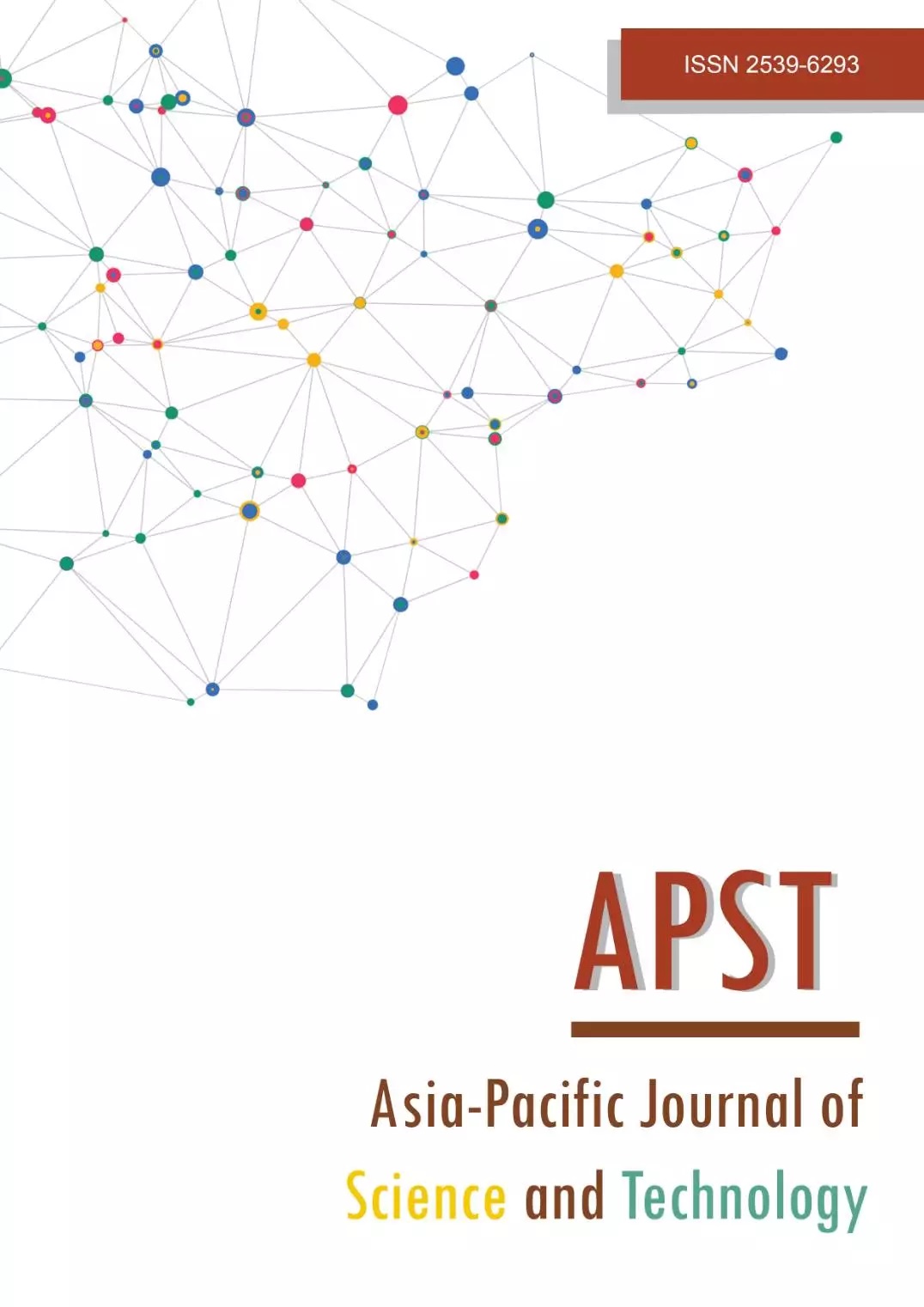Analysis of safety stock determination methodology-quantity vs. time buffers
Main Article Content
Abstract
In supply chain management, the safety stock approach is a viable solution to counter supply and demand uncertainty. Safety stock ensures safety against forecast errors and buffers against events that could not be predicted during the supply and demand forecast. Forecasting is an art, and safety stock calculation is science. Today various methods exist to determine safety stock, like static quantity based on historical data, Dynamic determination of minimum and maximum safety stock quantity through coverage profiles for each material, service level-based quantities, and maintaining safety stock based on time buffer instead of quantity buffer. The primary goal of this research is to analyze which method among quantity buffer /time buffer makes sense to different types of organizations based on various factors. Based on the systematic review of the recent studies, this paper suggests the appropriate approach for the unit of measure (UOM) for the safety stock for the products of the stable and low volume, regular and high volume, intermittent and low volume demand patterns, High seasonal, and high volume but has higher fluctuation categories. As a result, the conclusions of this study will help future researchers accurately anticipate the unit of measurement of safety stock based on their business conditions.
Article Details

This work is licensed under a Creative Commons Attribution-NonCommercial-NoDerivatives 4.0 International License.
References
Gonçalves JN, Carvalho MS, Cortez P. Operations research models and methods for safety stock determination: a review. Oper Res Perspect. 2020;7:100164.
Paul B, Tondihal S, Das BB. Safety stock in inventory management and wastage analysis at construction sites. In: Das BB, Nanukuttan SV, Patnaik AK, Panandikar NS, editors. Recent trends in civil engineering. 1st ed. Singapore: Springer; 2021. p. 509-517.
Zenkova ZN, Musoni W. The economic order quantity taking into account additional information about the known quantile of the cumulative distribution function of the product’s sales volume. Bus Inform. 2020;3(eng):24-34.
Omair A. Selecting the appropriate study design for your research: Descriptive study designs. J Health Special.2015;3(3):153.
Kothari CR. Research methodology methods and techniques. 1st ed. New Delhi: New Age International (P) Ltd; 2004.
Visser M, editor. Recognition and (de) humanization in the neoliberal workplace: Prospects and possibilities.36th EGOS Colloquium. 2020 Jul 2-4; Colloquium, Hamburg. Hamburg: Radboud University; 2020.
Curtis AE, Smith TA, Ziganshin BA, Elefteriades JA. The mystery of the Z-score. Aorta. 2016;4(04):124-130.
Barros J, Cortez P, Carvalho MS. A systematic literature review about dimensioning safety stock under uncertainties and risks in the procurement process. Oper Res Perspect. 2021;8:100192.
Brunaud B, Laínez‐Aguirre JM, Pinto JM, Grossmann IE. Inventory policies and safety stock optimization for supply chain planning. AIChE J. 2019;65(1):99-112.
Lee CJ, Rim SC. A mathematical safety stock model for DDMRP inventory replenishment. Math Probl Eng. 2019;2019:6496309.
Ranjith AM, Pillai VM. Determination of Safety Stock in Divergent Supply Chains with Non-stationary Demand Process. In: Pandey PM, Kumar P, Sharma V, editors. Advances in Production and Industrial Engineering. Singapore: Springer; 2021. p. 63-73.
Sarkar M, Sarkar B. Optimization of safety stock under controllable production rate and energy consumption in an automated smart production management. Energies. 2019;12(11):2059.
Bruzda J. Demand forecasting under fill rate constraints-The case of re-order points. Int J Forecasting.2020;36(4):1342-1361.
Rodrigues LR, Yoneyama T. A spare parts inventory control model based on Prognostics and Health monitoring data under a fill rate constraint. Comput Indust Eng. 2020;148:106724.
Trapero JR, Cardos M, Kourentzes N. Empirical safety stock estimation based on kernel and GARCH models.Omega. 2019;84:199-211.
Gonçalves JN, Carvalho MS, Cortez P. Operations research models and methods for safety stock determination: a review. Operations Research Perspectives. 2020;7:100164.
Persson F, Axelsson M, Edlund F, Lanshed C, Lindström A, Persson F, editors. Using simulation to determine the safety stock level for intermittent demand. 2017 Winter Simulation Conference (WSC). 2017 Dec 3-6; Las Vegas, NV, USA. USA :IEEE; 2017.
Gonçalves JN, Carvalho MS, Cortez P. Operations research models and methods for safety stock determination: a review. Operations Research Perspectives. 2020;7:100164.
Fillie S, Arvitrida NI, Pujawan, NI, editors. Simulation study of collaborative inventory management for seasonal products by incorporating newsvendor and buyback contract. The 21st International Conference on Engineering and Management in Industrial System (ICOEMIS 2019). 2019 Aug 8-9; Malang, Indonesia. Dordrecht: Atlantis Press; 2019.
Pham TN, Tan A, Ang A. Determining safety stock for an omni-channel environment. Int J Inform Syst Suppl Chain Manag. 2020;13(2):59-76.
Cai X, Du DL. On the effects of risk pooling in supply chain management: Review and extensions. Acta Mathem Appl Sinica, English Ser. 2009;25(4):709-722.
Deiranlou M, Dehghanian F, Pirayesh MA. The simultaneous effect of holding safety stock and purchasing policies on the economic production quantity model subject to random machine breakdown. Int J Eng. 2019;32(11):1643-1655.
Beutel AL, Minner S. Safety stock planning under causal demand forecasting. Int J Produc Econ.2012;140(2):637-645.
Jonsson P, Mattsson SA. An inherent differentiation and system level assessment approach to inventory management: a safety stock method comparison. Int J Logist Manag. 2019;30(1):663-680.
Kania A, Sipilä J, Afsar B, Miettinen K. Interactive multiobjective optimization in lot sizing with safety stock and safety lead time. In: Mes M, Ruiz-Lalla E, VoB S, editors. Computational Logistics Cham: Springer; 2021.p. 208-221.
King PL. Crack the code: Understanding safety stock and mastering its equations. APICS magazine.2011;21(2011):33-36.
Kumar K, Aouam T. Extending the strategic safety stock placement model to consider tactical production smoothing. Eur J Oper Res. 2019;279(2):429-448.
Srivastava DK, Kumar V, Ekren BY, Upadhyay A, Tyagi M, Kumari A. Adopting Industry 4.0 by leveraging organisational factors. Technol Forecasting Soc Change. 2022;176:121439.
Mukhuty S, Upadhyay A, Rothwell H. Strategic sustainable development of Industry 4.0 through the lens of social responsibility: The role of human resource practices. Bus Strategy Environ. 2022;31(5):2068-2081.


